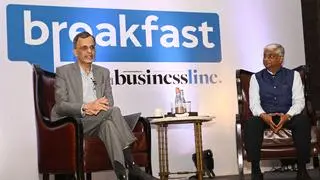If the Centre has its way, Monetary Policy making will become a government affair rather than being a preserve of the Reserve Bank of India. Going by the revised draft of the Indian Financial Code, the government is moving to take over powers to set the monetary policy.
The draft, put out by the Finance Ministry, among other things recommends setting up a seven-member Monetary Policy Committee (MPC) to decide on the policy rate by majority vote. Crucially, four of these members are to be appointed by the government. The RBI will nominate two members.
The draft IFC is for making the RBI Governor the head of the panel, and giving him/her the casting vote.
Many economy watchers cheered this recommendation of the revised draft as it will allow government to have majority in the panel. This could mean a push for growth as the final decision of the MPC will be binding on the central bank. If the proposal is accepted, then India will join a select group of countries like the UK that adopt the committee approach. The Finance Ministry has sought stakeholders’ comments on the revised draft by August 8.
Other changes The other key modifications made in the revised draft include strengthening the financial accountability of financial agencies, removing the provision empowering the Financial Sector Appellate Tribunal (FSAT) to review regulations, and regulating the systemically important payment system.
The initial draft of the IFC — submitted in March 2013 — has now been revised in the light of the comments received from the public and other stakeholders.
The latest modifications also factor in enactments subsequent to the submission of the Financial Sector Legislative Reforms Commission (FSLRC) report, an official release said.
The FSLRC was set up on March 24, 2011 for re-writing the financial sector laws to bring them in harmony with the current requirements. The report was submitted to the government on March 22, 2013. The FSLRC had recommended a non-sectoral, principle-based legislative architecture for the financial sector.








Comments
Comments have to be in English, and in full sentences. They cannot be abusive or personal. Please abide by our community guidelines for posting your comments.
We have migrated to a new commenting platform. If you are already a registered user of TheHindu Businessline and logged in, you may continue to engage with our articles. If you do not have an account please register and login to post comments. Users can access their older comments by logging into their accounts on Vuukle.